Don Q, Son of Zorro (1925)
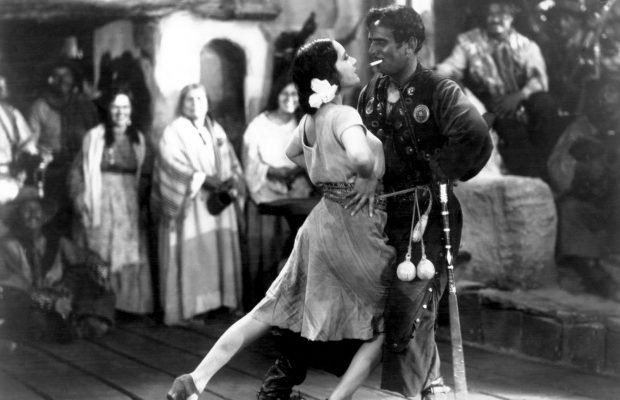
Toronto Film Society presented Don Q, Son of Zorro (1925) on Monday, April 18, 1966 as part of the Season 18 Monday Evening Silent Film Series, Programme 6.
(Main Auditorium, UNITARIAN CHURCH, 175 St. Clair West)
~~~~~~~~~~~~~~~~~~~~~~~~~~~~~~~~~~~~~~~~~~~~~~~~~~~~~~~~~~~~~~~~~~~~~~~~~~~~~
Programme No 6
Monday April 18, 1966
A two-reel comedy (to be announced)
Douglas Fairbanks in Don Q, Son of Zorro (1925)
~~~~~~~~~~~~~~~~~~~~~~~~~~~~~~~~~~~~~~~~~~~~~~~~~~~~~~~~~~~~~~~~~~~~~~~~~~~~~
As announced here last February, we are unable to offer you the documentary on ANNA PAVLOVA that we had (tentatively) promised for this date. It seems that someone is disputing some of the legal rights to this film, and until the matter can be settled the Museum of Modern Art has cancelled all the bookings on it. Which lets us out for this year.
In its place we offer a two-reel comedy which we hope you’ll enjoy. We’re afraid to tell you what it’s going to be; at the rate things are going this year it might have to be changed at the last minute. But if it’s what we ordered, it will be by a Well Known Comedian, still alive and currently very active.
* * *
Don Q, Son of Zorro
Released by United Artists
Based on the novel “Don Q’s Love Story” by K. and Hesketh Pritchard
Directed by Donald Crisp
Cameraman: Henry Sharp
Copyright by The Elton Corp., July 8, 1925
In 11 reels
CAST:
Don Cesar de Vega……Douglas Fairbanks
Zorro, his father………..Douglas Fairbanks
Dolores de Muro……….Mary Astor
General de Moro………Jack McDonald
Don Sebastian…………Donald Crisp
The Queen……………..Stella de Lanti
The Archduke………….Warner Oland
Don Fabrique…………..Jean Hersholt
Colonel Matsado……….Albert MacQuarrie
Lola………………………Lottie Pickford Forrest
Robledo…………………Charles Stevens
Bernardo………………..Tote du Crow
The Duenna…………….Martha Franklin
Her admirer……………..Roy Coulson
Ramon…………………..Enrique Acosta
* * *
The Mark of Zorro (1920) was Doug Fairbanks’ first costume picture, his first break from the all-American-Boy roles that had brought him to fame and fortune in the 29 pictures he had made since he entered films in 1915 as a popular Broadway star. Indeed, The Mark of Zorro, his 30th film, was such a complete departure that as soon as it was finished he nervously reverted to type and hastily made another film (The Nut) in the old tried-and-true formula. But when The Mark of Zorro was released it proved his most popular picture to date, and thereafter he spent the rest of the 1920’s making big costume pictures, taking a year or more over each one.
The Mark of Zorro had been based on a short story called “The Curse of Capistrano” by Johnston McCulley that had been published in a pulp magazine in 1919. (All subsequent film and TV incarnations of Zorro owe their existance to the 1920 Fairbanks film which rescued the obscure magazine story from oblivion). It will be noted that Don Q was based on a novel by a different author; this makes us suspect that the original Don Q was unrelated to Zorro until the films scenarist got hold of him. Don Q came immediately after The Thief of Bagdad, whose relative unpopularity may have inspired a desperate attempt to capitalize on the immense popularity of The Mark of Zorro five years earlier. (Zorro was also re-released around this time).
Don Q was reviewed in August 1925 issue of Photoplay Magazine by “A.S.” (probably Agnes Smith):
“If the little boys on the front row promise not to scream, Douglas Fairbanks will blindfold his eyes and, with one flick of the whip, put out a candle….”
That’s the sort of picture Don Q is; it is guaranteed to drive little boys into frenzies of stunts until they break an arm or a new fad comes along. It is romance all snapped up with vaudeville tricks, adventure told in terms of athletics.
In case you haven’t heard, Don Q is the son of our old friend Zorro. There are, of all things, a few scenes from the first adventures of Zorro, and the old man, played by Mr Fairbanks himself in a white wig, appears in the story so you have a double-barrelled climax with two sword fights. [TFS members take note that The Son of the Sheik wasn’t made till a year after this film]. The young Don Q, however, is most of the show. And the joy of all the stunts–the new ones and the old ones–is the feeling you have that Mr Fairbanks really knows his stuff. It’s all real and no fooling.
The story is lively but clumsy; it is full of overseeing and overhearing and dark doings. But as it is laid in the beautiful and mythical Spain of romance, it has the advantage of taking place in a rich and gorgeous background. And Mr Fairbanks, in Spanish clothes doing a Spanish dance, is a sight to behold. In fact, in all his pantomime, he’s really more of a dancer than an actor.
Next in interest to Mr Fairbanks is Warner Oland, who gives a splendid performance of a gay Archduke. When the Archduke dies, the story never quite recovers from the blow. Mary Astor is so beautiful as the heroine that she doesn’t seem quite human. She is the ideal lady for romance. Donald Crisp, the director, makes a swell sneaking villain.
And now, Mr Fairbanks, won’t you tell us the adventures of old man Zorro’s grandson.
Douglas Fairbanks liked to have a gimmick in each picture, and he found a fascinating one for Don Q: an Australian bullwhip. And it is typical of him that when it was decided that he would play a character who was an expert with the bullwhip, he went into training so that he could himself become in fact an expert with the bullwhip. His demonstrations in Don Q are not faked: they are the proud fruits of intensive practice to acquire the skill. The whip itself was “long, very slender and with a very sinuous lash fastened to a short, buttlike handle and tapering from an inch or so in thickness to a little more than a small cord in its 15th or 16th foot in length. It was used by cattlemen in the early ranch days of Southern California”. Actually the whip, made of strips of kangaroo leather, was two whips, one inside the other. “When the first whip was carefully plaited, a second whip was braided around it, thus creating a lash of the greatest pliability and strength”.
DOUGLAS FAIRBANKS was born in Denver, Colorado, on May 23, 1883, and died in Hollywood on December 12, 1939.
In the year 1900, at the age of 17, he went to New York to try to crash Broadway, and after five years managed to do so. Between 1905 and 1915 he was a successful Broadway star; and it was as such that he was imported into Hollywood in 1915. (His first film, The Lamb, was a screen version of one of his most popular plays, “The New Henrietta”, which in 1921 was remade as Buster Keaton’s first feature, The Saphead). Unlike most stage stars who were brought into films then (there was a great influx at that time) he adapted easily to the silent medium, and his first film was a big success at the box-office. Within a year he was drawing $10,000 a week; and with the hope of making even more he went into production for himself. During 1917 and 1918 his films were released by Paramount; after which he and Mary Pickford, D.W. Griffith and Charles Chaplin founded United Artists, and all the rst of his films were released by this company.
With his last silent film, The Iron Mask (1929), he said farewell to his familiar screen character. In the next five years he made five more films, beginning with The Taming of the Shrew (1929)–the only film in which he and Mary Pickford co-starred–and ending with what Louise Brooks calls “his last sad and beautiful picture”: The Private Life of Don Juan (1934), which he made in England for Alexander Korda. The public by this time was no longer interested, and neither was Fairbanks.
In 1920, having divorced his first wife (the mother of Doug Fairbanks Jr), he married Mary Pickford (she having divorced Owen Moore for the purpose), and this romance between two of the most popular stars in screendom was very gratifying to the fans. So was the fact that the marriage showed every sign of defying Hollywood tradition by being permanent; but unfortunately it wasn’t.
For all his fame and fortune, for all the go-getting, youthful exuberance of both his screen personality and his public image, there was a dark and morbid streak to his soul that grew broader as he became older. Indeed, it is quite possible that the restless exuberance, the practical jokes, the athletics and physical fitness mania were all frantic attempts to keep himself distracted from the horrible depths that haunted him. All his life he worshipped Youth, and his physical conditioning enabled him to cling to his own for a long time. (When he made Don Q he was 42). Youth is indeed a wonderful thing and it is well to make the most of it; but there must be philosophical provision made for old age, and Doug had none. In later years, actors like Gary Cooper, Clark Gable and Cary Grant successfully ignored it, exuding the implication that one’s fifties are the prime of life. But with the passing of his youth, Doug Fairbanks had nothing to cling to, and a tragic demoralization crept in. His frantic restlessness wrecked his fourteen-year marriage with Mary Pickford, and their divorce disillusioned their fans. He married Lady Sylvia Ashley and continued to live an active social life in Hollywood, till a coronary thrombosis put an end to his unhappiness.
(See “Douglas Fairbanks: The Fourth Musketeer” by Ralph Hancock and Doug’s niece Letitia Fairbanks; also Mary Pickford’s excellent autobiography, “Sunshine and Shadow”).
MARY ASTOR was born less euphoniously as Lucile Vasconcells Langhanke on May 3, 1906, in Quincy, Illinois. She broke into movies in 1920 by way of a fan magazine beauty contest (at 14?), her first film being Beggar’s Maid. By 1925, when Don Q was made, she was (at 19) a popular leading lady, and her career continued to boom until the end of the twenties. After a brief set-back caused by the advent of talking pictures she bounced back and carried on. It was not all smooth sailing, however, but she enjoyed another resurgence in the early forties. During the forties and fifties she was also active in radio and television, and has now turned to literature. In 1959 she published her autobiography, “My Story”, and in 1960 her first novel, “The Incredible Charlie Carewe”.
WARNER OLAND, who was Swedish, later became associated with the roles of Dr Fu Manchu and Charlie Chan in a popular series of films in the thirties.
JEAN HERSHOLT, who was Danish, was an excellent and versatile character actor. He is best remembered in film society circles for his role in Greed; and Silent Series veterans may remember him as the racetrack tout in Stella Dallas.
LOTTIE PICKFORD FORREST was Mary’s younger sister. She had a flourishing screen career of her own at one time, and around 1918 was the star of a popular serial The Diamond from the Sky.
STELLA DE LANTI was the Duchess de Lanti of Spain, making her first (and last?) screen appearance…or so they told us at the time.
* * *
APPENDIX: SOME CORRECTIONS AND FOOTNOTES
Re our notes for The Life of an American Fireman (Program #1, Nov 1, 1965), George Pratt of the George Eastman House in Rochester suggests that the influence on Porter was less the Méliès films than a specific English film, Fire!, made by Williamson some time before November 1901. Since Edison drew on the Williamson catalogue, the chances are that Porter saw this film and decided to re-do it with an American mise-en-scène for American audiences. (Blame my resource book, Jacobs’ “The Rise of the American Film”, for my ignorance. I wonder how many errors are being perpetuated because screen historians persist in copying from each other instead of doing their own research and double-checking all the source material!)
CHARLES RAY (same program)… Mr Pratt also identifies the film listed as The Lure of Women as being a 1915 two-reeler called The Renegade, but reissued later under the other title. He also points out that the 1917 version of Skinner’s Dress Suit was not a Charles Ray film but starred Bryant Washburn and was made by Essanay. (So please cross this title out of the Charles Ray filmography).
POLA NEGRI (Program #4, Feb 21/66)… Louise Brooks writes: “You should never draw any conclusions from the color of hair. The first thing I noticed when Mal St Clair introduced me to Negri in her dressing room was that her hair was dyed black. Also I was 20 at the time and Negri looked and acted 35. 1890 would be her birthday”. Fan magazines in 1922, before she went to Hollywood, were giving Negri’s age as thirty. A few years later they were giving 1897 as the year of her birth. Take your choice. Herbert Howe, who wrote her “as told to” memoirs for a fan magazine somewhere around 1924, has reported that after they had finished he said to her “Now tell me the real story”, whereupon she promptly told him a completely different story, equally fascinating. No wonder film historians find trouble in getting their facts straightened out!”
WALLACE REID (Program #5, Mar 28/66)… One of our Silent Series members has supplied two more Wallace Reid titles from his memory: Good Gracious, Annabelle (Feb 1919; directed by George Melford) and The Charm School (Dec 1920; James Cruze). We have also found two more titles in a recent book called “Immortals of the Screen”: The Crackman’s Christmas (Universal, 1916) and Rimrock Jones (Paramount, 1918; directed by Donald Crisp, who later directed and also appeared in Don Q). And if we had re-checked “Classics of the Silent Scren” we could have added the titles of two 1914 shorts: At Dawn and His Mother’s Influence.
Miss Brooks also adds a comment on our note regarding the use of music on the set: “Many directors did not have musicians on the set at all. And I never worked in a picture where music was played during the shooting of a scene. Directing and acting are hard enough without the distraction of bum music. (Unless some emotional star like Crawford demands it). As you know, the real hell of making pictures is the hours of waiting while they take sets apart and put them together and then have to spend hours lighting them. The director is always busy, but to keep actors pepped up, to keep them from going crazy, the music was helpful between scenes”.
* * *
This is the last show of the season. We apologize for all the films that didn’t arrive, but we hope you lied all the films that you did see, and that you enjoyed the season well enough to join up for next season’s series. Don’t forget to return the Questionaire. And have a good summer.
Notes by Fraser Macdonald

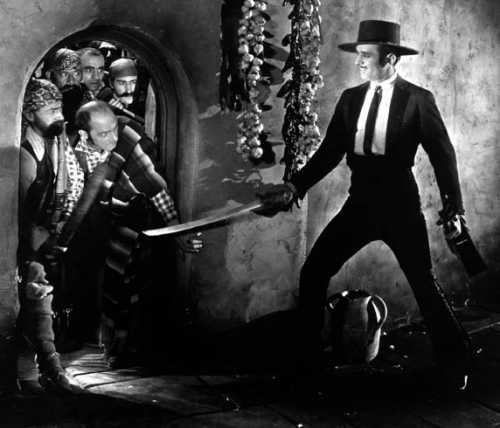
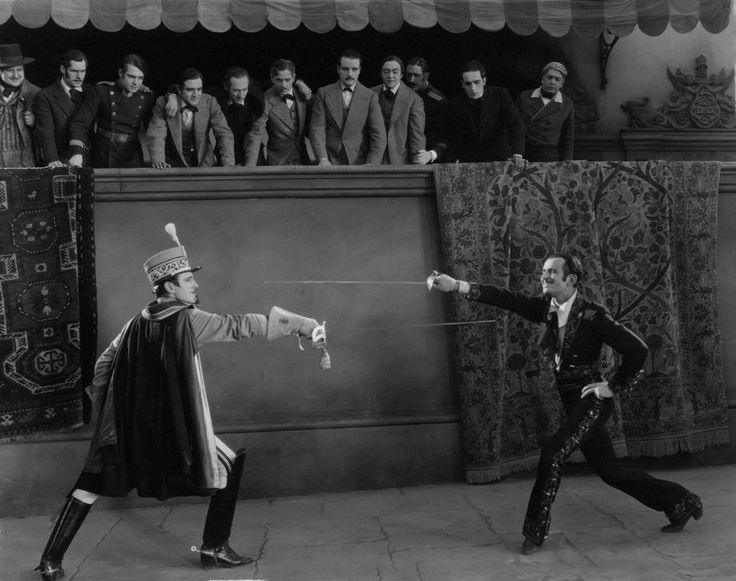
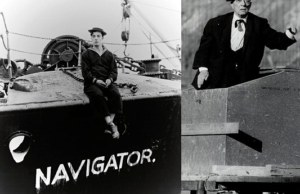
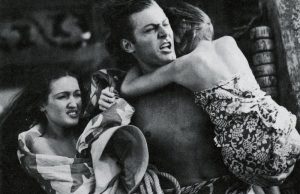
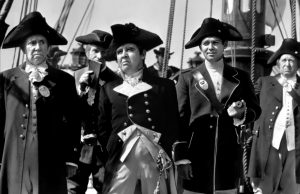






Leave a Reply